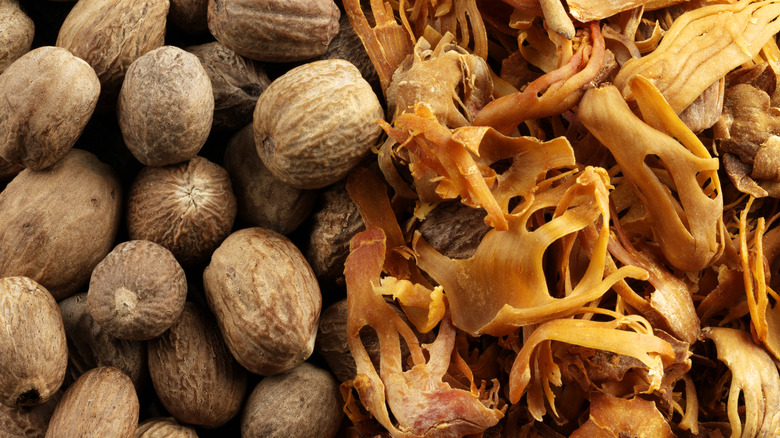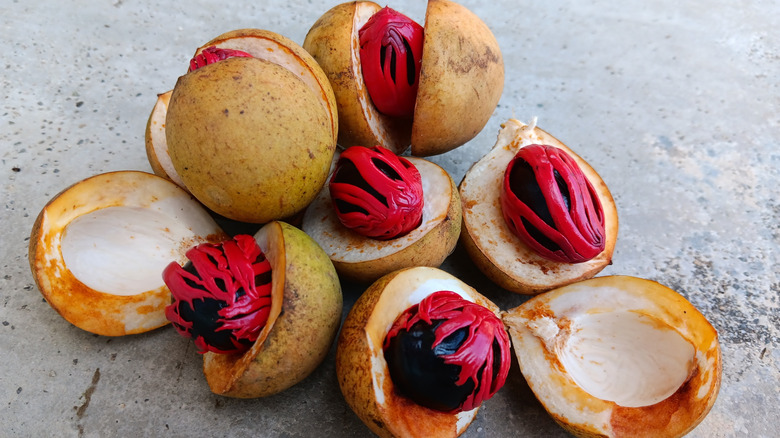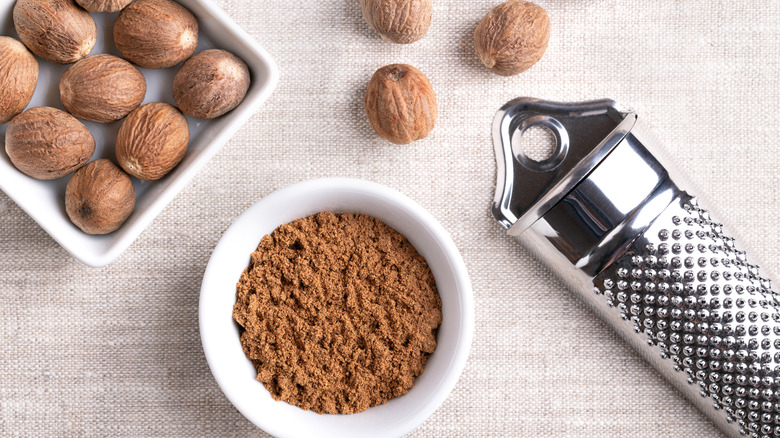Mace Spice Vs Nutmeg: What's The Difference?
Everything tastes better with a little spice. After all, European explorers went around the world in search of sources of aromatics like cinnamon, pepper, clove, and turmeric, and your kitchen wouldn't be complete without a well-stocked spice rack or drawer. You don't need to buy absolutely every spice to be a cook, however, and it pays to know the difference between similar spices like nutmeg and mace. Despite the different names, these two spices actually come from the same tree and fruit, and they can often be used interchangeably. They're not exactly the same, however.
In terms of flavor, mace and nutmeg have both have nutty, warm flavors that taste great in pumpkin pie and mulled wine. Mace, however, is a bit stronger of the two spices when it's ground, so if you're planning to sub mace for nutmeg, just know that you'll need to scale the spice profile down.
Nutmeg and mace come from the seed of the same fruit
Nutmeg and mace are made from the seeds of fruit from the Myristica fragrans tree, which is native to the Molucca spice islands in Indonesia. The tree produces small fruits, which are about the same size as an apricot. When they're ripe, the fruit is harvested and processed and the seeds are dried. Nutmeg is the inner round ball of the seed itself, and mace is made from the red membrane that surrounds the outside of the seed and protects it from the fruit, which is also called an aril.
These days we don't think a lot about where nutmeg comes from, and probably even less about mace, unless they're mixed into a pumpkin spice latte. But back in the time of the spice trade, nutmeg and mace were hard to come by since it was so hard to get to Indonesia. Nutmeg is still grown on the "spice islands" of Indonesia to this day, but it's also grown in other parts of the world including parts of Africa, India, the Sri Lanka, and even tropical regions of the Americas.
Subbing mace for nutmeg
Since both spices come from the same source, it's perhaps only natural that nutmeg and mace have a lot of the same flavors of pepper, cinnamon, cardamom, and pine. Mace has more black pepper and coriander-like flavors. Nutmeg has more nutty, sweet qualities. This makes nutmeg a better choice for jobs like adding earthiness to spaghetti sauce or leveling up Alfredo sauce. Mace is a better choice for spice rubs, creamy soups, and any desserts made with tart fruit.
If you come across a recipe that calls for ground mace and you only have ground nutmeg, or vice versa, you can certainly swap one for the other. For recipes that call for nutmeg, use ¼ of the amount of mace. If the recipe calls for mace but you only have nutmeg, scale it up by ¾. You might even find that a blend of nutmeg and mace are best for recipes like granola, ice cream, and traditional eggnog, where a little extra complexity can make the dish more interesting. Once you get to know what each spice can do, you might even start to understand why people once risked their lives to sail around the world in search of nutmeg and mace.



